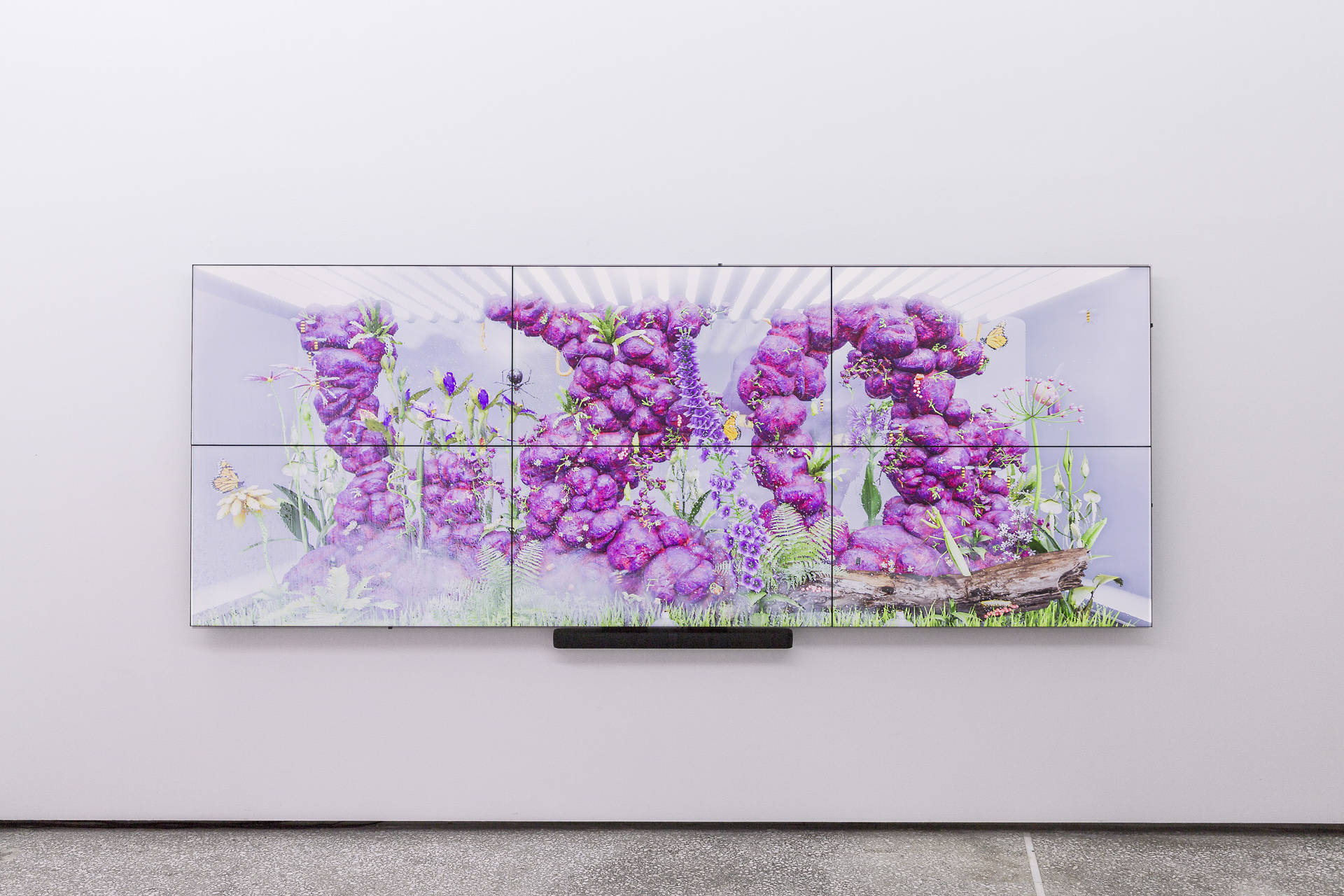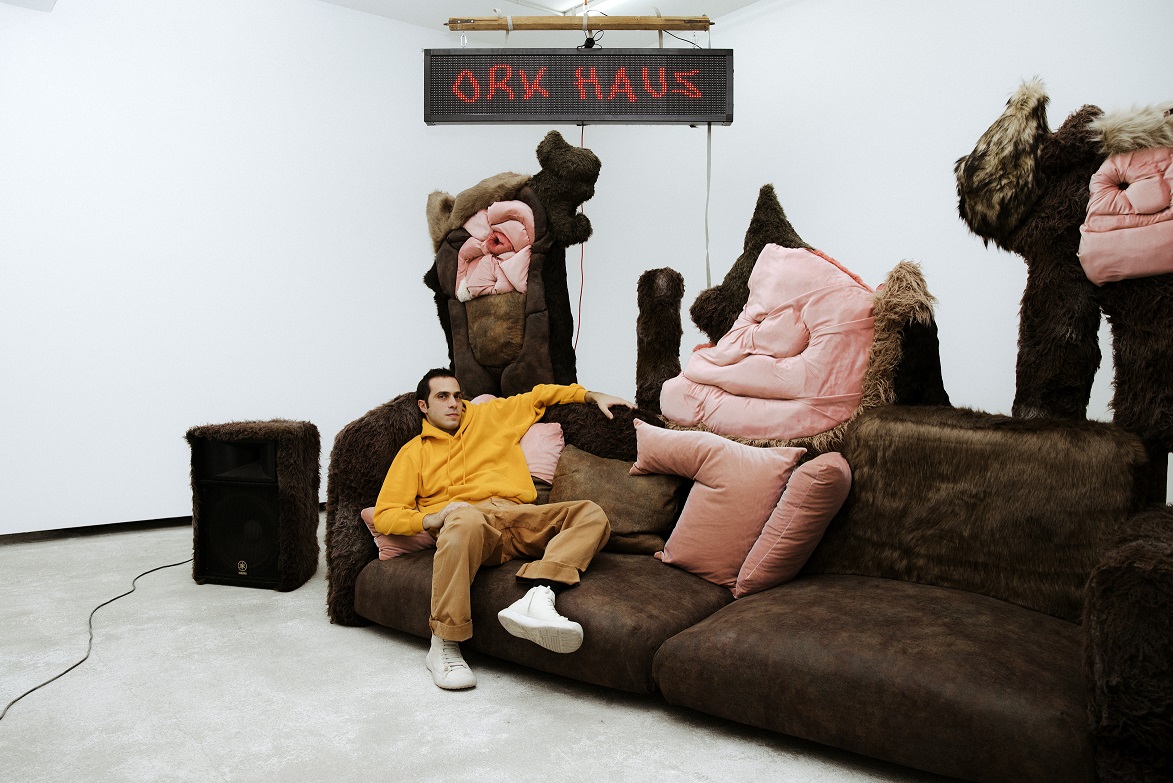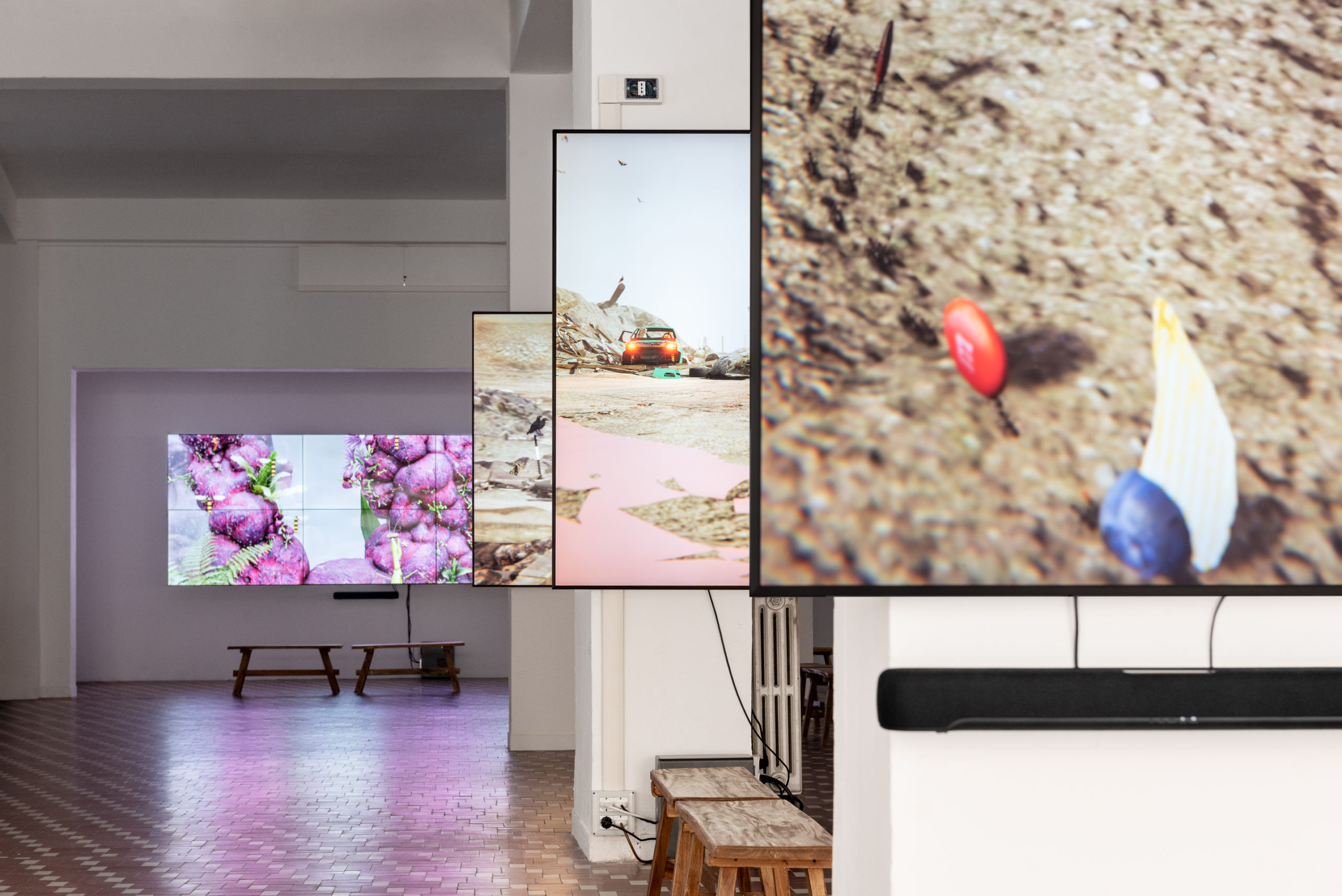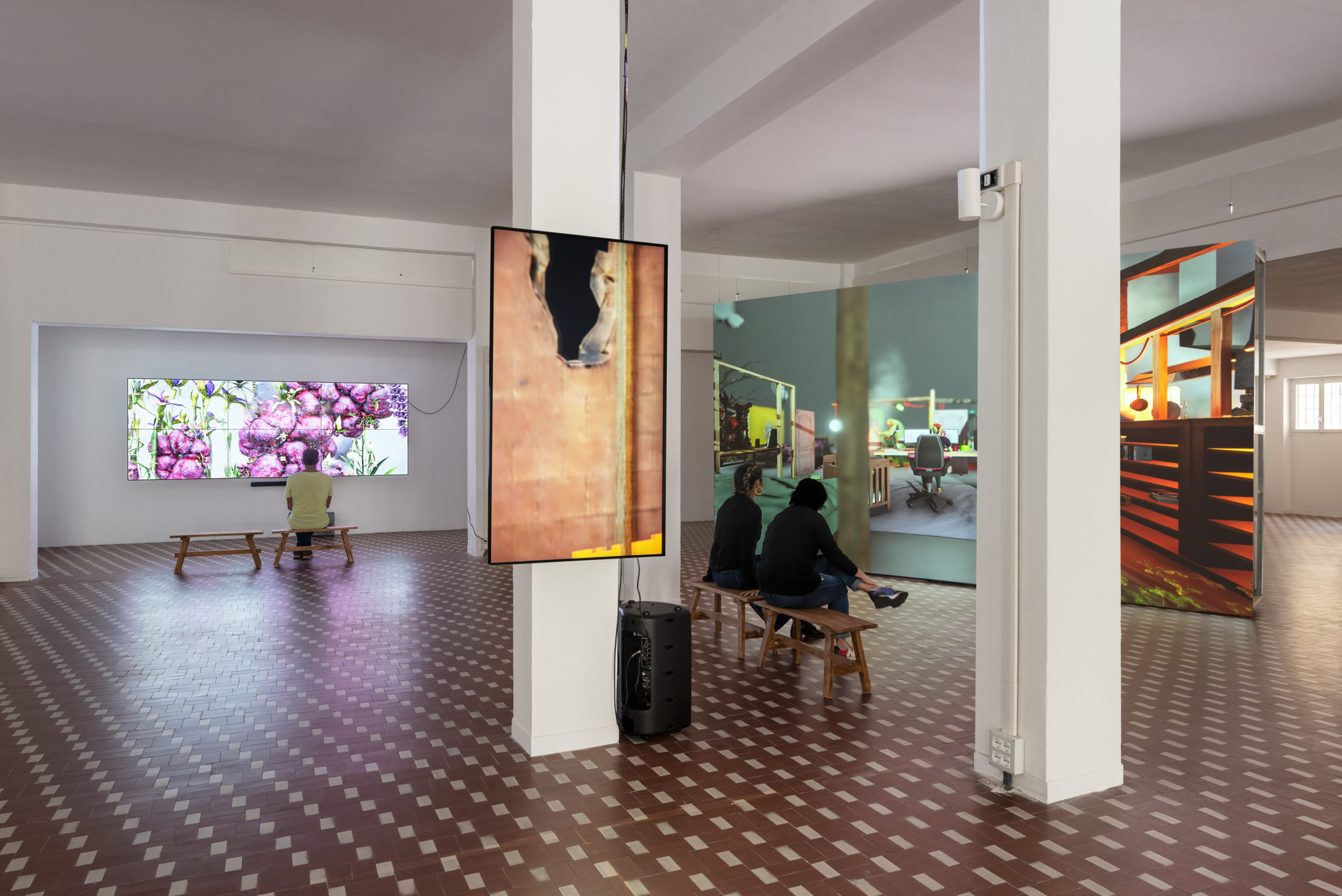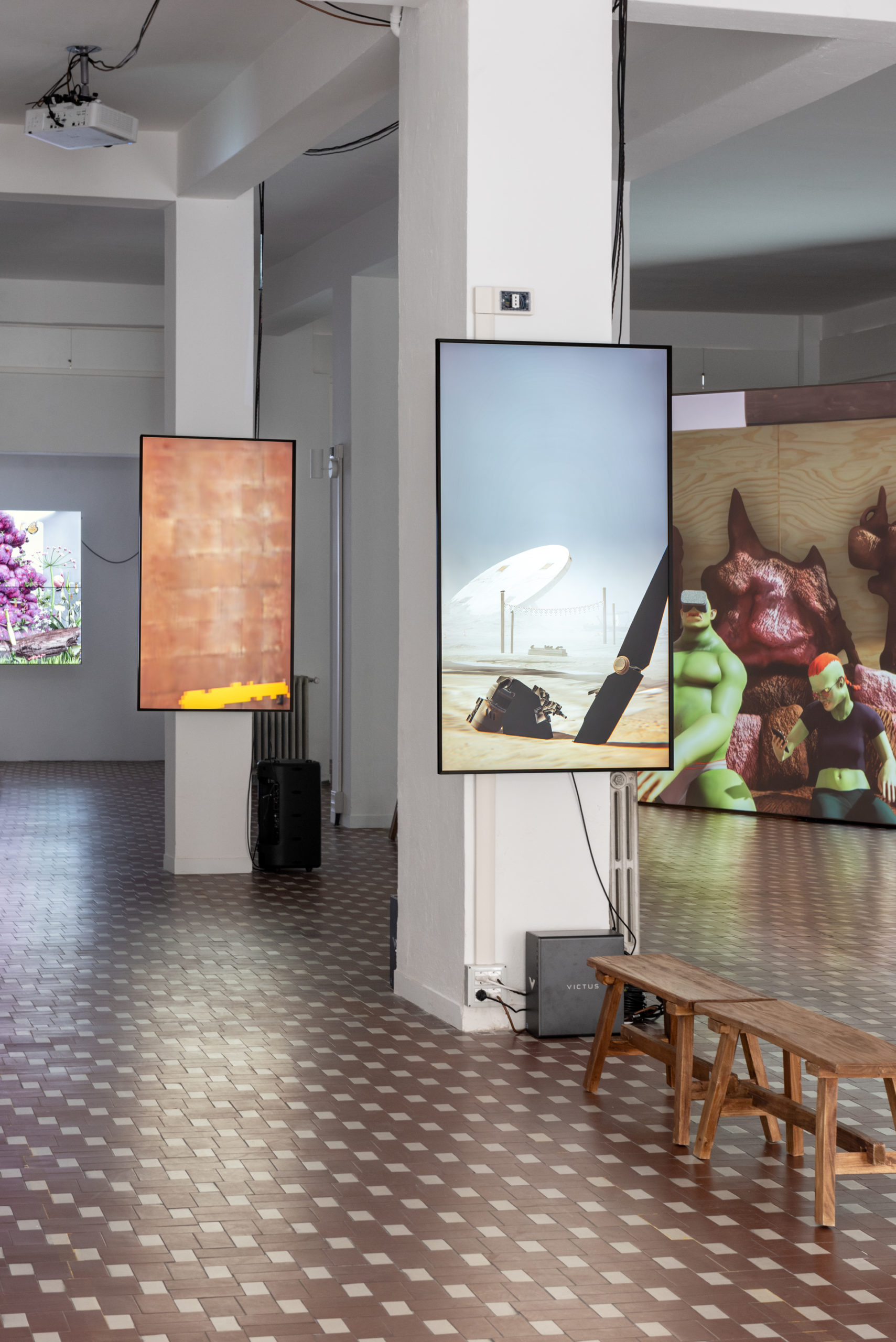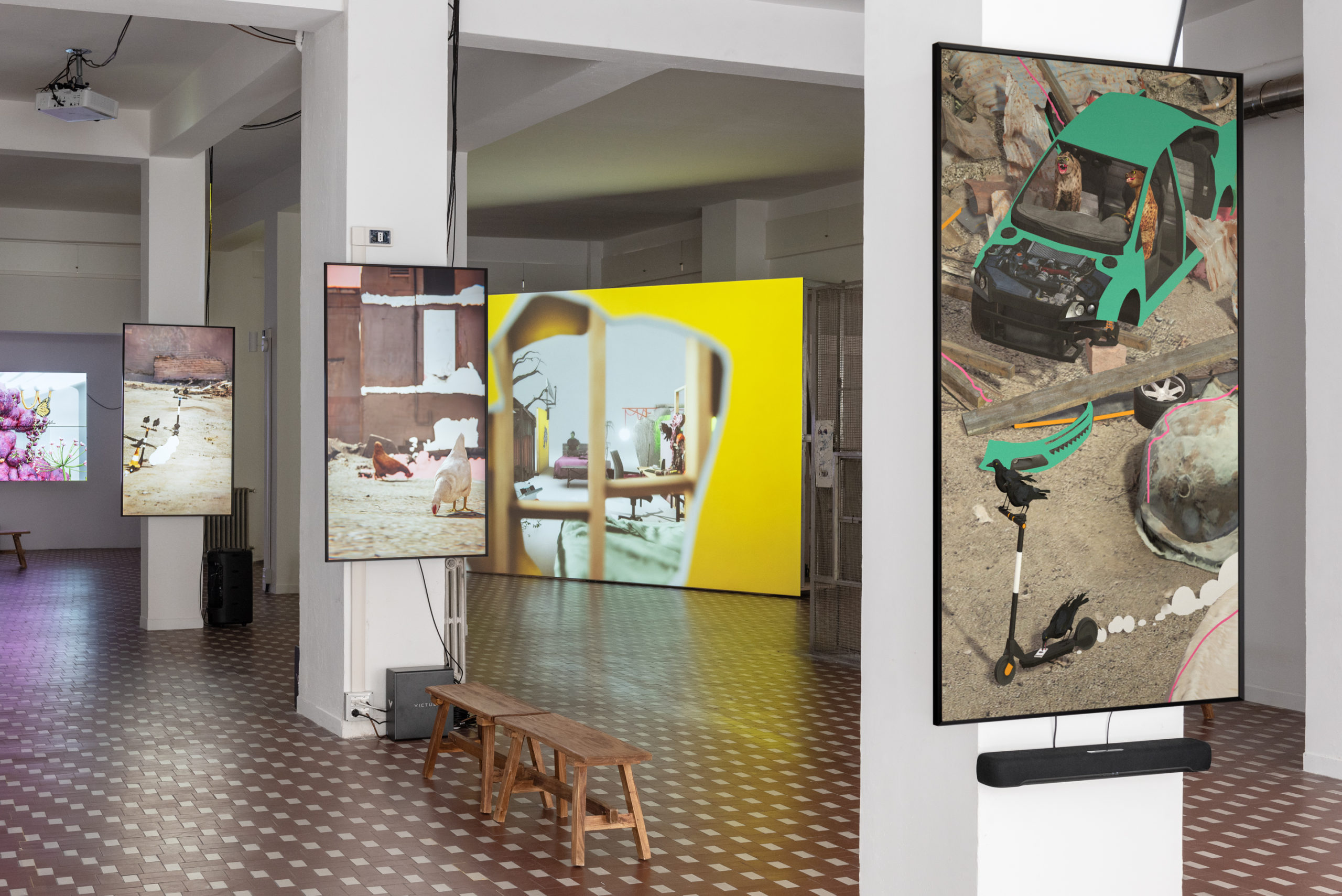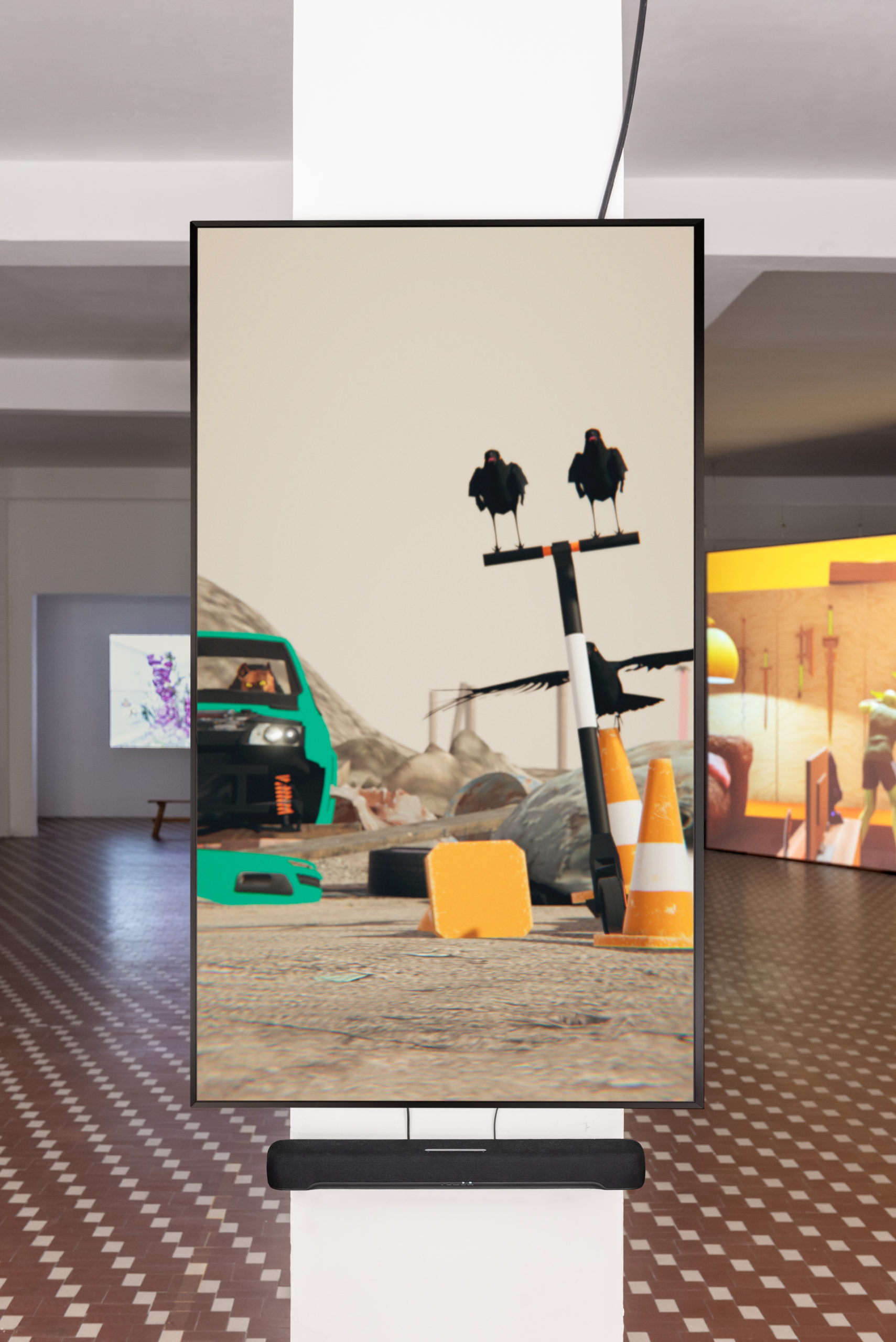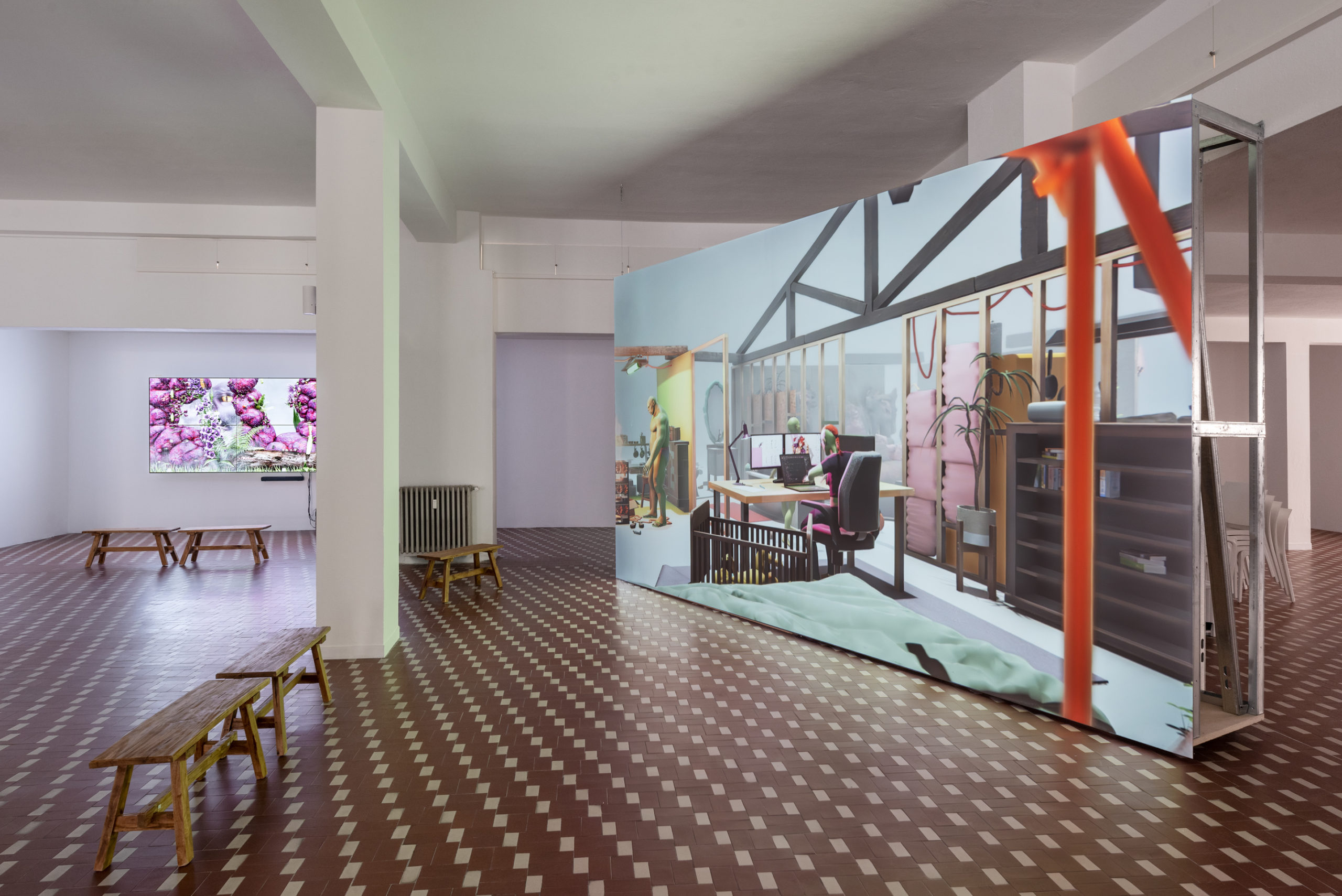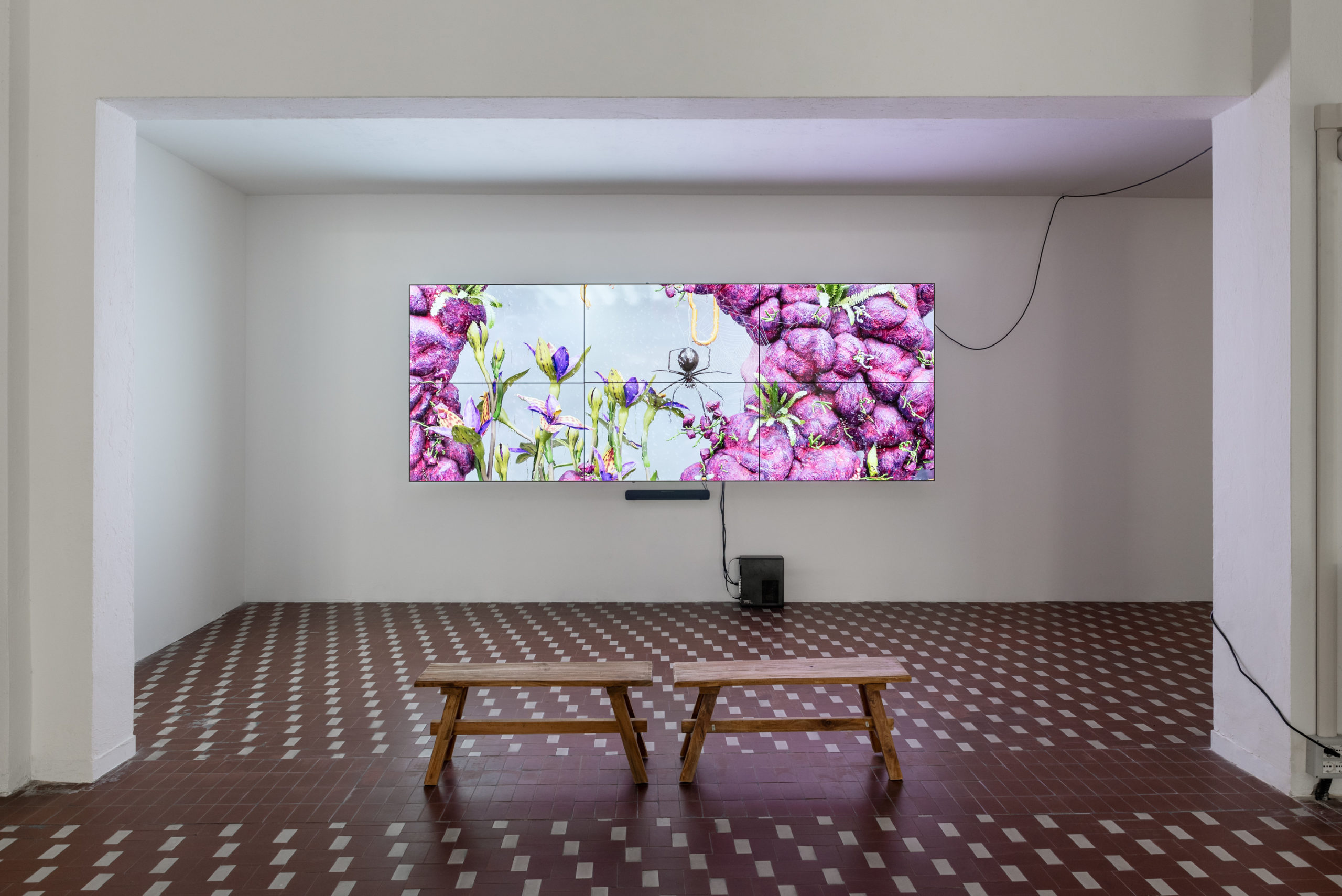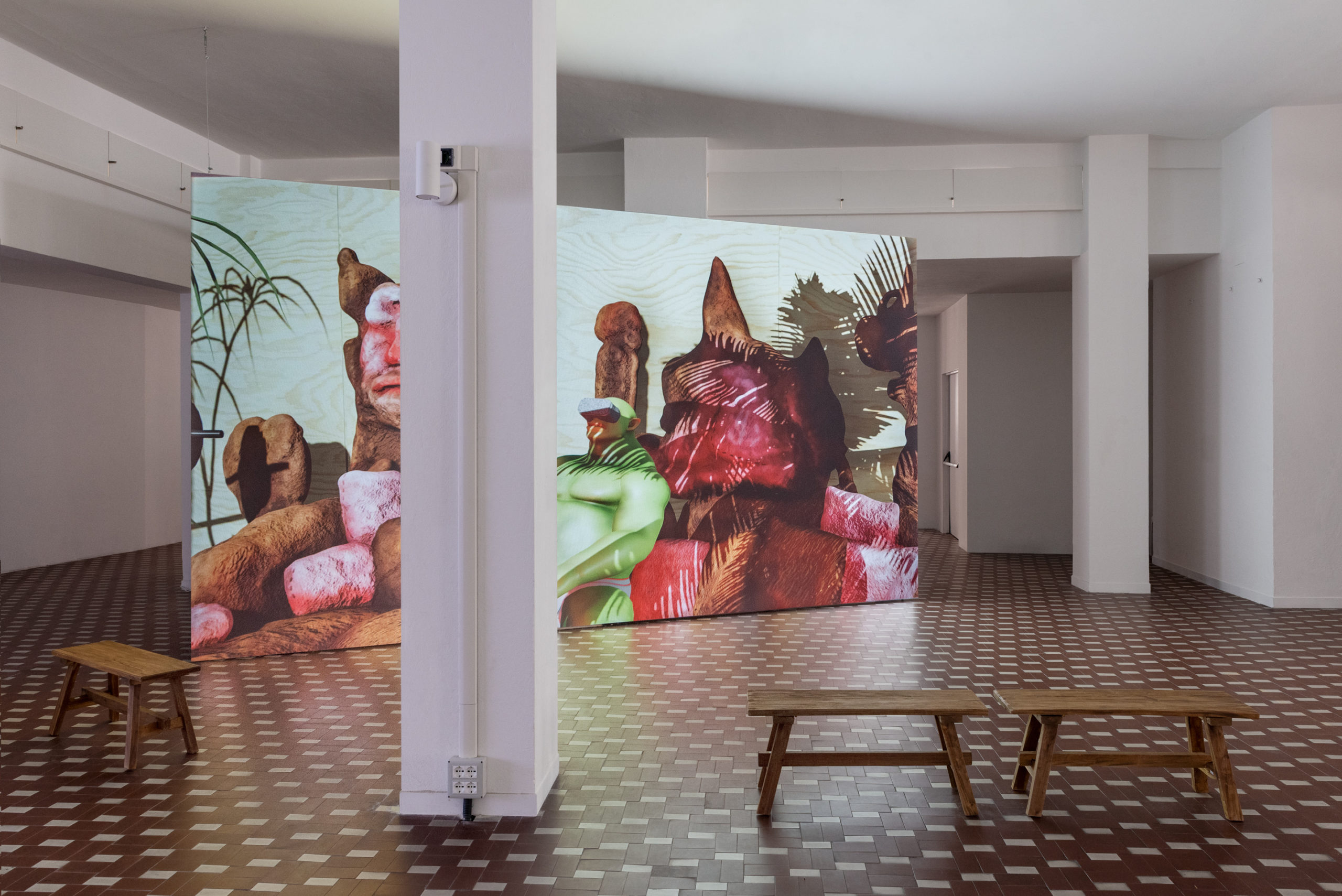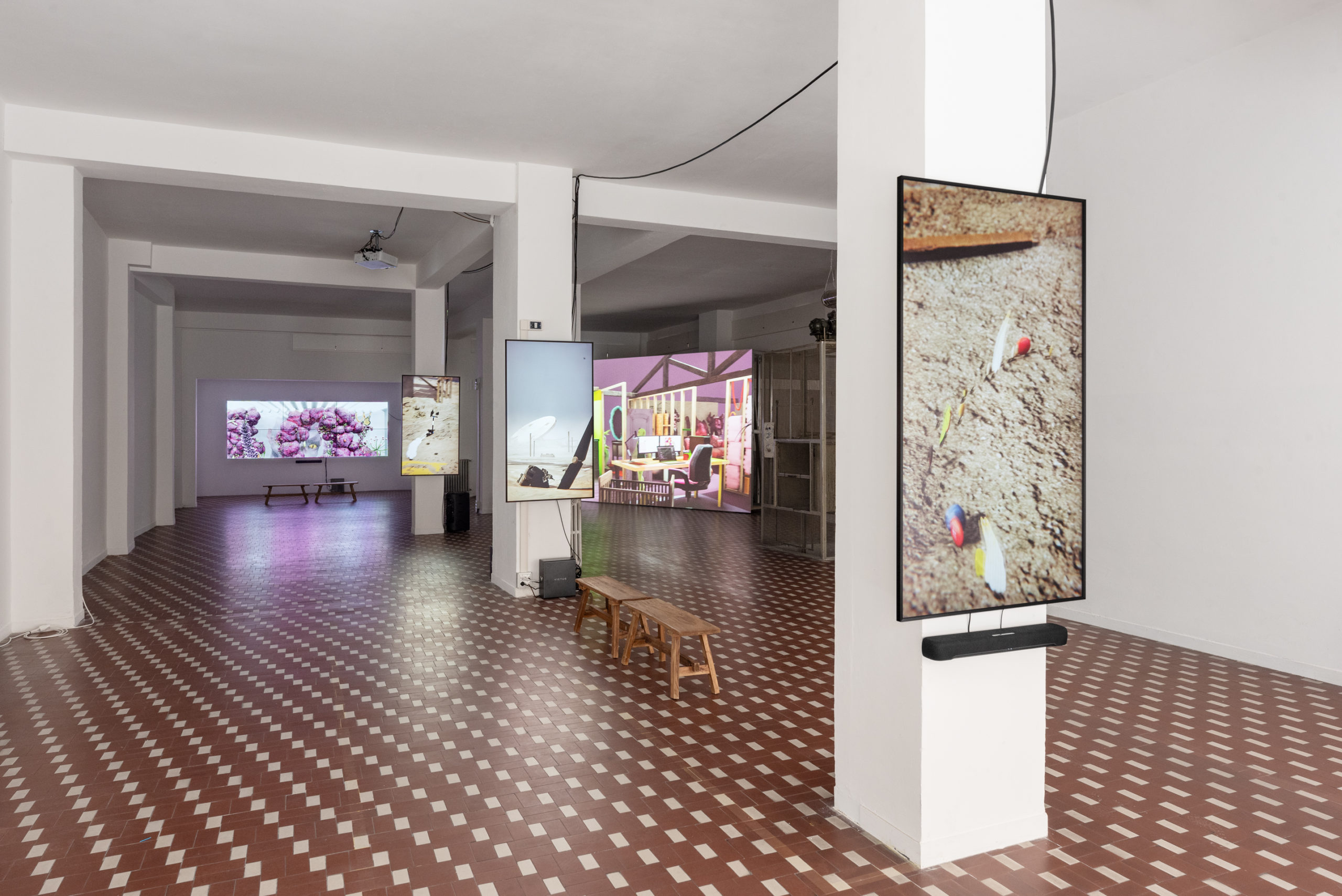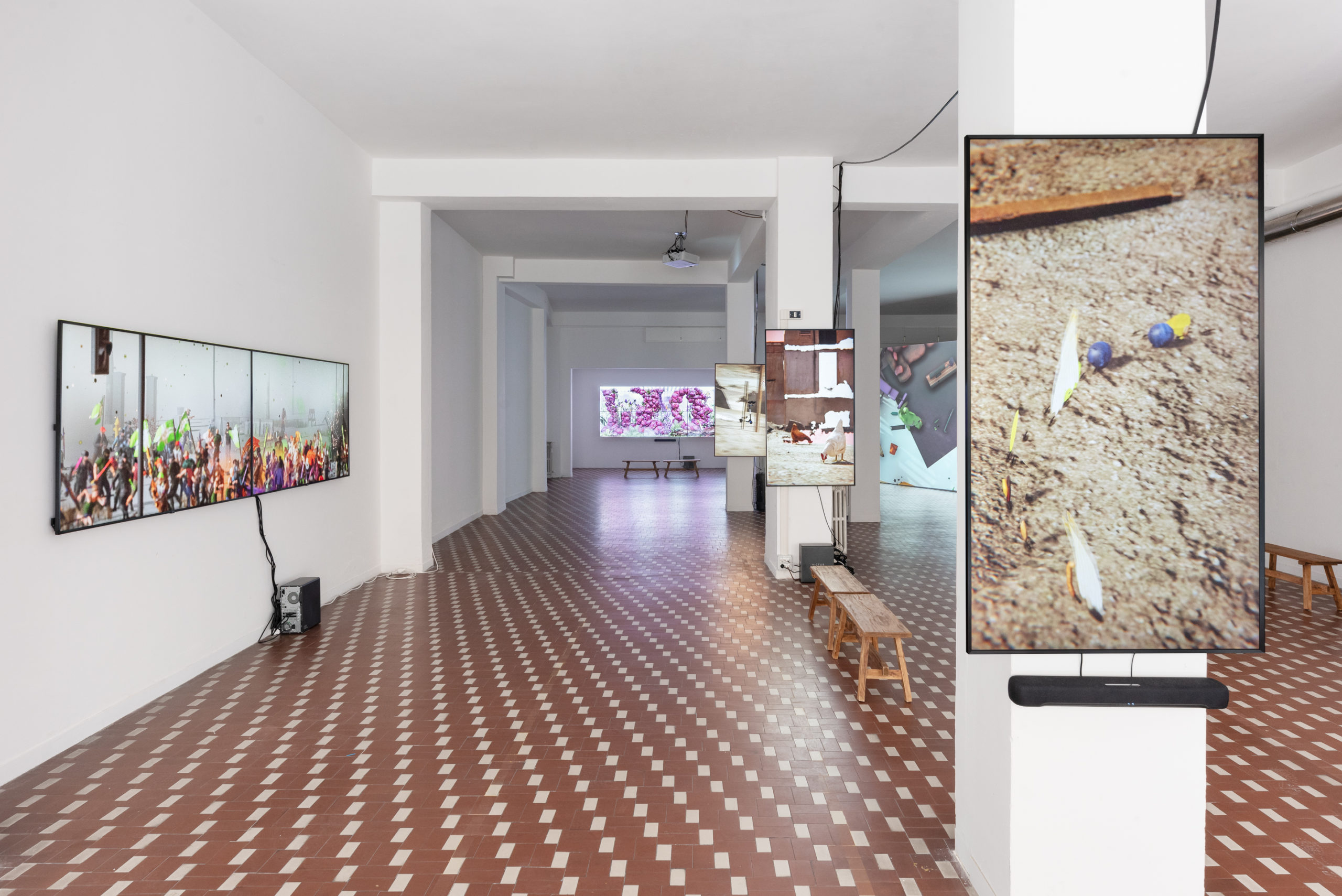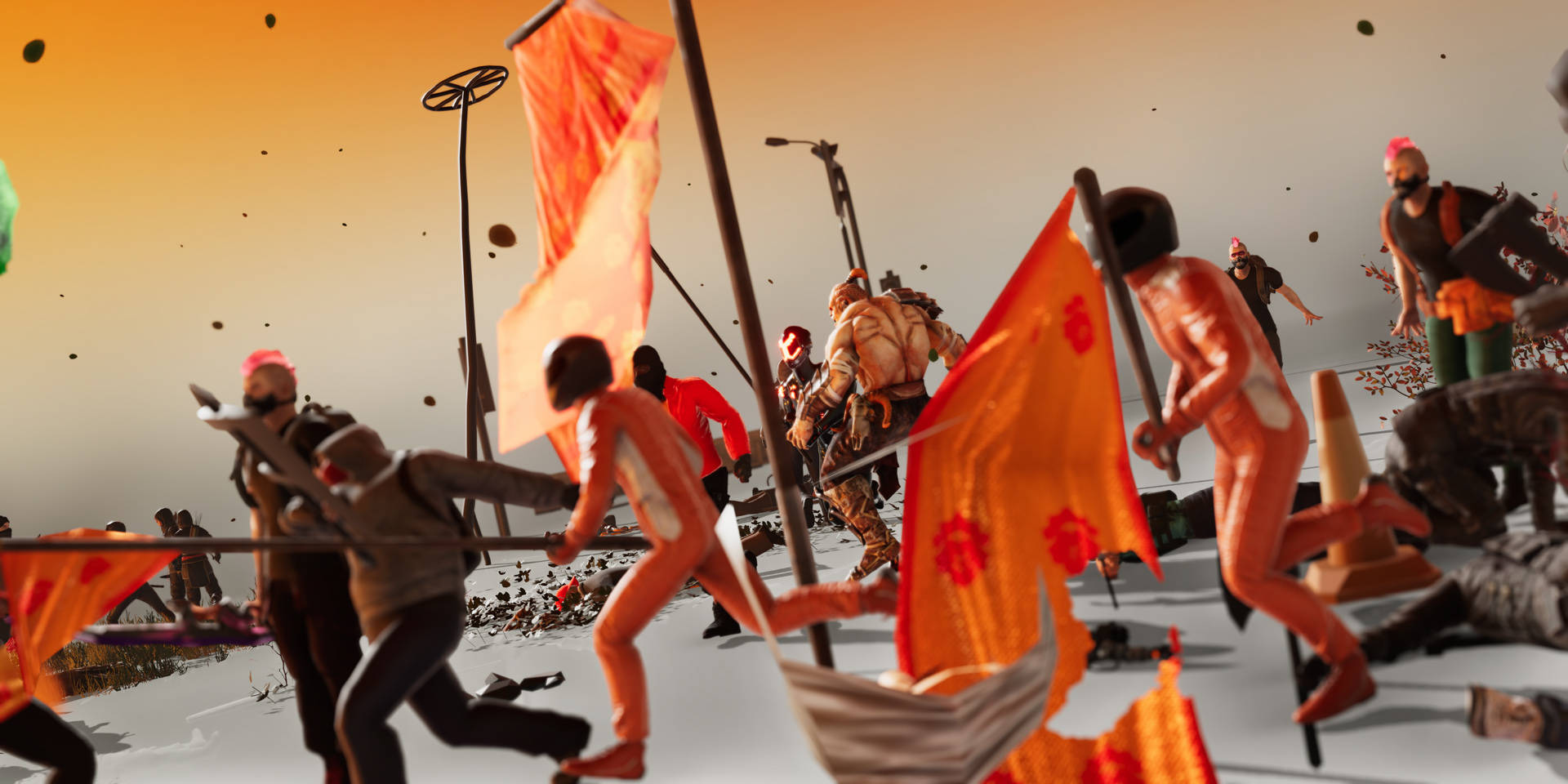Theo Triantafyllidis: Sisyphean Cycles
On the occasion of Art Verona 2023, Spazio Vitale opens to the public for the first time with Theo Triantafyllidis: Sisyphean Cycles (curated by Domenico Quaranta). The exhibition brings together, for the first time in a single set-up, four simulations by the Greek artist, guiding the viewer through an articulated and compelling narrative journey, and into as many ecosystems-worlds, programmed by the artist in such a way as to modify themselves according to autonomous behavior.
Significant examples of world building, a creative practice that is the subject of growing interest in both the artistic, philosophical and literary spheres, Theo Triantafyllidis’ live simulations are simulation software that bring to life immersive digital environments, sometimes automated, sometimes interactive, that can take various forms and adapt to different displays (from virtual reality to augmented reality to video installation); “in vitro simulations,” complete systems that the viewer can, from time to time, observe with scientific coolness or actively manipulate.
Triantafyllidis engages this medium both to critically narrate contemporary reality, highlighting the individual and social consequences of communication technologies on human beings; and to simulate alternative realities that start from radically different conditions.
More specifically, the exhibition presents four recent installations, ringed according to a narrative that proceeds from the critique of the present to the construction of alternative worlds: Ork Haus (2022), Radicalization Pipeline (2021), Ritual (2020) and BugSim (Pheromone Spa) (2022).
Ork Haus depicts a family of orks in their home environment, as they live a daily existence heavily conditioned by digital technologies, both at the level of interpersonal communication and at the level of household management and escape in simulations (video games, VR, streaming video). The ork, elsewhere used by the artist as his alter ego, is a recurring figure in his work, a narrative solution that allows him to reduce his characters to a set of elementary and thus paradigmatic drives and forms of communication. The protagonists of the simulation appear, each in their own way, imprisoned in their alternate realities, while the world around them seems to be falling apart.
In Radicalization Pipeline, two seemingly endless hordes clash into a violent free-for-all, swinging large melee weapons and shouting with distorted voices. A wide range of characters -from citizen militias to fantastical creatures -enter the screen only to kill each other, wave after wave, sinking their virtual bodies slowly into a muddy landscape. The mood occasionally lightens up by the medieval covers of familiar pop songs that complete the soundscape conceived by the composer and sound designer Diego Navarro. Looking at phenomena such as the rise of QAnon and the US Capitol attack, the artist suggests connections between gamification, fantasy, and political radicalization: the “funnel” structure of social media, which create discursive bubbles in which we are constantly exposed to like-minded people and to content that confirms our ideas, is analyzed in its political and social implications, emphasizing the role their “confirmation bias” takes in the emergence of cults, the circulation of fake news, and the process of political radicalization.
Instead, Ritual takes us to a seemingly familiar place – a readymade space appropriated and modified from a Game Engine demo – and to an unknown, post-apocalyptic time, in which human life, wiped out by a cataclysm, seems to have left behind only the ruins. In this situation, a nascent ecosystem made up of insects and animals gradually manifests its existence according to a repetitive and hypnotic rhythm, as if in some kind of strange ritual.
Finally, BugSim (Pheromone Spa) welcomes us into a precious slice of microscopic life preserved in an intensive care terrarium. Through a moist glass surface and within lush vegetation expands a busy Colony of Ants. Slowly and painstakingly they are working to form a brittle purple mud into a structure they can call home. From this structure grows an entire forest of tiny flowering plants, calling to be pollinated by buzzing Honey Bee replicas and inhabited by a teeming microfauna. All but self-sustaining, this closed terrarium system is engineered to simulate all the necessary natural cycles for the fragile community of organisms: an experiment in resilience and entropy carefully monitored by a mysterious figure.
